Mastering trading with momentum indicators involves utilizing tools like RSI, Stochastic oscillator, and MACD to capitalize on market trends. Momentum trading focuses on short-term price movements, requiring continuous monitoring and understanding of trend strength and market sentiment. Volume, volatility analysis, and evaluating risk-reward ratios are vital in enhancing trading skills and evaluating strategies. Analyzing momentum indicator signals and combining them with other technical tools can help in timing entry and exit points. Beginners can benefit from this strategic approach by gaining insights into trend changes and making informed trading decisions. Further insights into practical applications await those seeking to enhance their trading proficiency.
Understanding Momentum Trading
Momentum trading is a strategy employed by traders to capitalize on existing trends in asset prices. It involves utilizing technical analysis tools such as moving averages and the Relative Strength Index (RSI) to identify stocks with strong price momentum. This strategy focuses on exploiting short-term price movements by entering positions in securities showing robust momentum.
Traders engaging in momentum trading must continuously monitor market conditions to pinpoint ideal entry and exit points, effectively managing risk in the process. Success in momentum trading hinges on comprehending trend strength, gauging market sentiment, and leveraging momentum indicators for well-informed trading decisions. By understanding the dynamics of momentum, traders can navigate the market with a strategic approach, aiming to ride the wave of price movements in the desired direction.
However, it's important to acknowledge the inherent risks associated with momentum trading, requiring traders to exercise caution, discipline, and a thorough understanding of the market to capitalize on profitable opportunities while mitigating potential downsides.
Key Concepts of Momentum Indicators
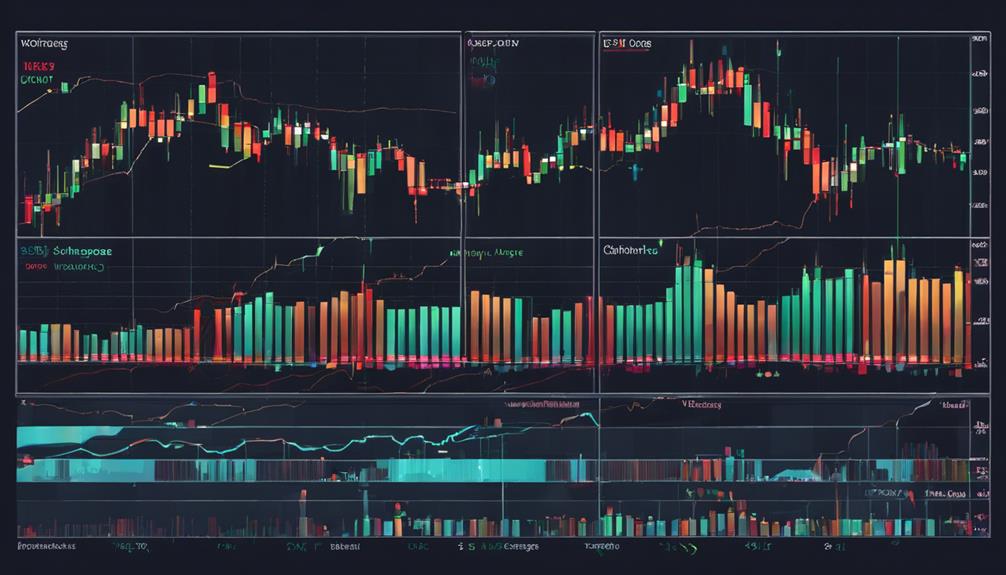
Building upon the understanding of momentum trading, the key concepts of momentum indicators provide traders with essential tools to analyze trend strength and price movement direction for informed decision-making in the market. These indicators, such as the Relative Strength Index (RSI), Stochastic oscillator, and Moving Average Convergence Divergence (MACD), offer insights into the speed and magnitude of price changes, aiding traders in identifying potential entry and exit points.
Importance of Market Trends
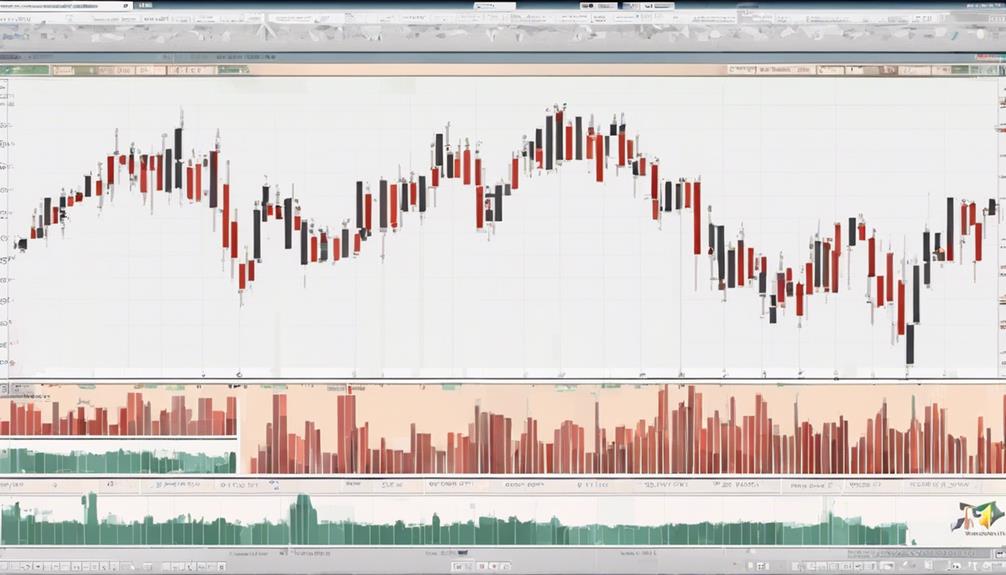
An essential aspect of successful trading strategy lies in recognizing and adapting to prevailing market trends. Market trends provide vital insights into the general direction of asset prices, whether they are moving upward (bullish), downward (bearish), or remaining range-bound (sideways).
Traders rely on momentum indicators to confirm these trends and make well-informed trading decisions. By understanding market trends, traders can identify potential opportunities for profit and adjust their strategies accordingly. Successfully trading with momentum indicators requires a deep understanding of how market trends influence price movements.
Traders who can accurately interpret and follow these trends are better positioned to capitalize on market fluctuations and make profitable trades. By staying attuned to market trends and using momentum indicators effectively, traders can enhance their chances of success in the dynamic world of trading.
Recognizing the importance of market trends is fundamental to engaging in informed and successful trading practices.
Leveraging Volume in Trading
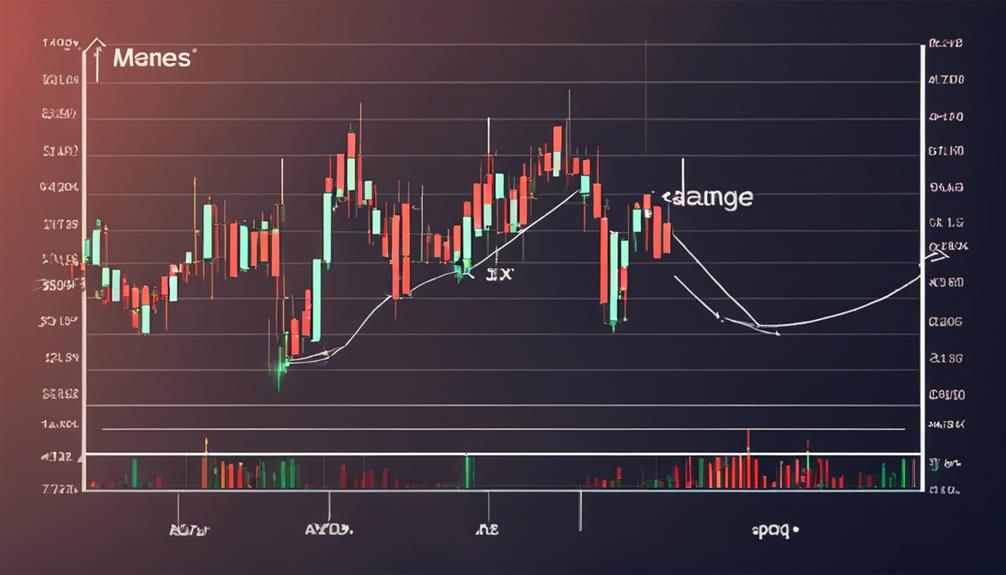
Understanding the role of volume in trading is paramount for effectively leveraging market dynamics and making informed trading decisions. When it comes to leveraging volume in trading:
- Market Liquidity: High trading volume is essential for momentum trading as it signifies market liquidity, enabling traders to enter and exit positions smoothly.
- Price Trends Confirmation: Traders rely on volume to validate price trends and momentum. A surge in volume often precedes significant price movements, providing valuable insights.
- Informed Trading Decisions: Analyzing volume alongside price movements helps traders assess the strength of a trend, leading to more informed trading decisions.
- Market Sentiment Insights: Monitoring volume patterns can offer insights into market sentiment and the potential sustainability of price movements in momentum trading strategies.
Understanding how volume interacts with price movements is key to mastering momentum trading strategies effectively. By interpreting volume data accurately, traders can gain a deeper understanding of market dynamics and improve their trading outcomes.
Exploring Volatility in Markets
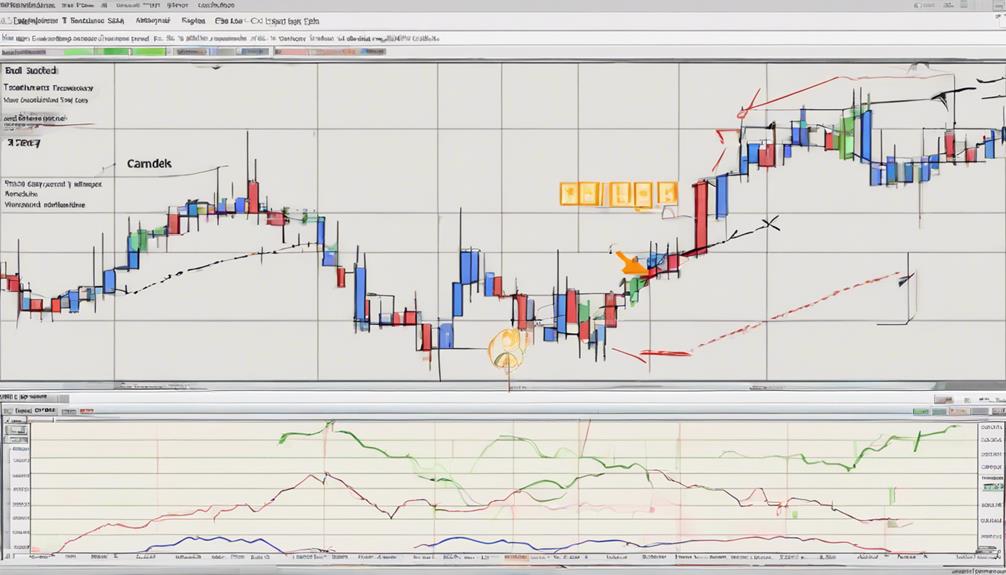
Exploring the dynamics of volatility in financial markets is essential for traders seeking to navigate the complexities of price fluctuations and risk management strategies effectively.
Volatility refers to the degree of price changes in assets over a specific period, indicating market uncertainty and risk levels. High volatility can lead to significant price swings, creating opportunities for traders to capitalize on short-term momentum.
To assess market movement intensity, traders often rely on indicators like the Average True Range (ATR) and adjust their risk management strategies accordingly. Understanding volatility enables traders to anticipate potential market movements and adapt trading strategies to accommodate increased price fluctuations.
Volatile markets offer both high-profit potential and increased risk, necessitating traders to adapt their approaches and leverage volatility to their advantage. By incorporating volatility analysis into their decision-making process, traders can better position themselves to profit from market fluctuations while effectively managing risk.
Suitable Trading Strategies for Momentum
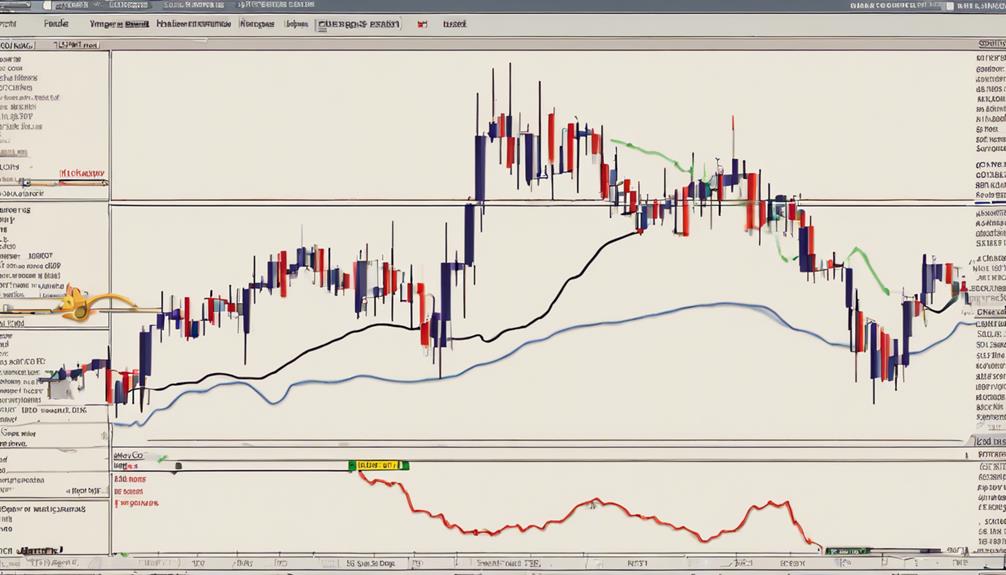
Momentum trading strategies encompass a range of approaches that emphasize identifying and leveraging strong price movements to capitalize on prevailing trends in financial markets. When considering suitable trading strategies for momentum, traders typically focus on the following key points:
- Trend Following: This strategy involves identifying and following the direction of a prevailing trend in an asset's price movements.
- Breakout Trading: Traders look for instances where the price breaks above resistance levels, indicating a potential continuation of the trend.
- Relative Strength: This strategy compares the performance of one asset to another in the same category, aiming to capitalize on the stronger asset's outperformance.
- Mean Reversion: Contrary to trend following, this strategy assumes that overbought or oversold assets will eventually revert to their mean prices.
Traders use technical analysis indicators like moving averages, RSI, MACD, and stochastic oscillator to identify optimal entry and exit points. Effective risk management is essential in momentum trading to protect capital and maximize profitability.
Utilizing Momentum Indicators Effectively

Utilizing momentum indicators effectively in trading involves mastering the timing of market entries and identifying potential trend reversals.
By understanding how these indicators measure the strength and speed of price movements, traders can make informed decisions on when to buy or sell assets.
Incorporating momentum indicators into trading strategies enhances the ability to interpret market sentiment and improve overall trading performance.
Timing Market Entries
Effective market entry timing hinges on the meticulous interpretation of momentum indicators' signals within the broader context of market trends and conditions. When utilizing momentum indicators for timing market entries, consider the following:
- Understand Indicator Parameters: Familiarize yourself with the specific settings and parameters of each momentum indicator.
- Utilize Multiple Indicators: Combine different momentum indicators to validate entry points and increase confidence in your decisions.
- Look for Convergence or Divergence: Pay attention to signals where momentum indicators align or deviate, indicating potential entry opportunities or warning signs.
- Interpret Signals Strategically: Interpret signals in the context of broader market trends to make well-informed decisions on when to enter the market.
Identifying Trend Reversals
When analyzing market trends, keen observation of momentum indicators can offer valuable insights into potential trend reversals. Momentum indicators such as RSI and MACD play an important role in identifying overbought or oversold conditions, signaling possible trend reversals.
It's crucial to watch out for divergence between price movements and momentum indicators as it can indicate an upcoming shift in the trend. Monitoring changes in momentum indicator values concerning price fluctuations can provide a glimpse into evolving market sentiment.
To enhance the accuracy of identifying trend reversals, combining multiple momentum indicators is advisable. Utilizing these indicators alongside other technical analysis tools can offer a more thorough confirmation of potential trend reversals, aiding traders in making informed decisions.
Common Risks in Momentum Trading

Momentum trading presents inherent risks that traders must navigate, including potential trend reversals and false signals. To succeed in momentum trading, traders need to be aware of these common risks:
- Overbought or Oversold Conditions: Traders may encounter challenges when assets become overbought or oversold, potentially leading to counterproductive trading decisions.
- Liquidity Concerns: In momentum trading, liquidity risk arises from market conditions impacting trade execution. Low liquidity can result in wider spreads and slippage, affecting profitability.
- False Signals: False signals are a prevalent risk in momentum trading, leading to erroneous trade entries or exits. Traders must employ robust risk management strategies to mitigate losses.
- Volatility: The inherent volatility in momentum trading poses a risk as prices can fluctuate rapidly. Traders need to anticipate and adapt to sudden price movements to avoid significant losses.
Understanding and managing these risks are essential for traders looking to master momentum trading successfully. By being vigilant and employing effective risk management techniques, traders can navigate these challenges and enhance their trading performance.
Evaluating Momentum Trading Strategies
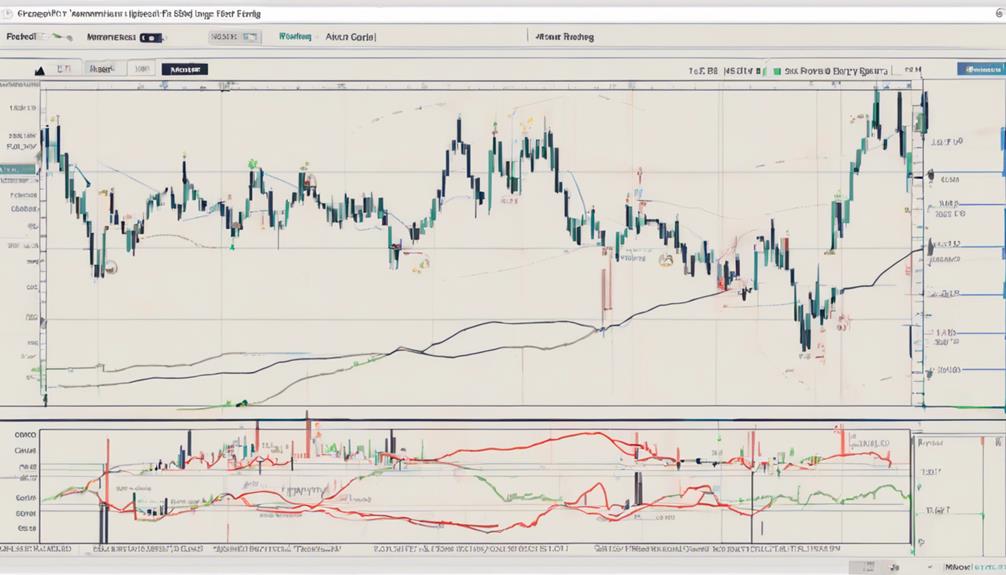
An exhaustive evaluation of trading strategies centered on momentum indicators is essential for traders seeking to optimize their performance in dynamic market environments.
When evaluating momentum trading strategies, analyzing historical data is critical to understand their effectiveness. Traders should assess the risk-reward ratios of different approaches to guarantee profitability.
It is important to compare the success rates of various momentum indicators such as RSI, MACD, and moving averages in different market conditions to determine their reliability. Monitoring the consistency of entry and exit signals provided by momentum indicators is key to refining trading strategies.
Utilizing backtesting and simulation tools can help test the robustness of momentum trading strategies before implementing them in live markets. By carefully evaluating these factors, traders can enhance their understanding of market dynamics and improve the profitability of their trades.
Enhancing Trading Skills With Momentum
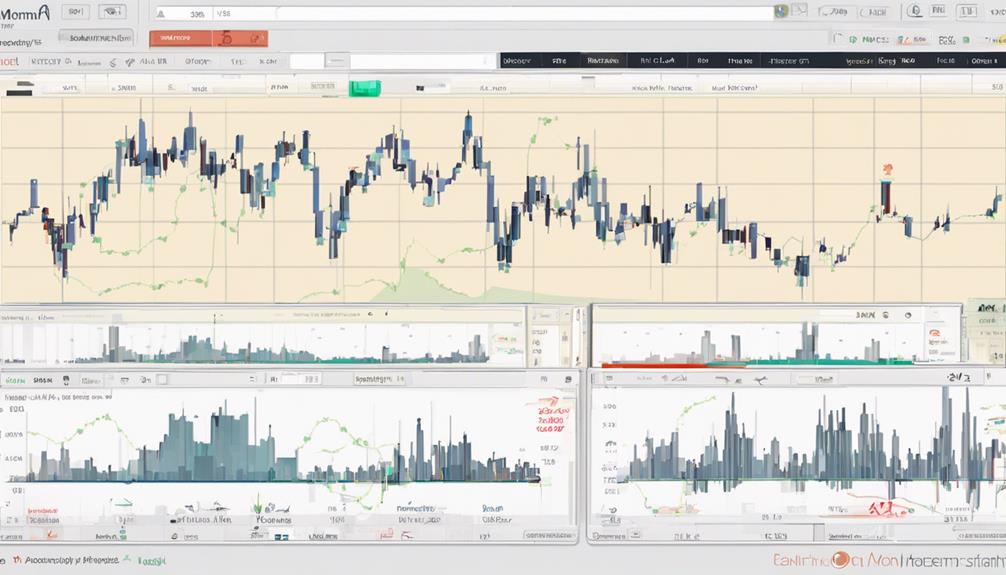
To enhance trading skills with momentum indicators, traders need to grasp the basics of these indicators. They must interpret their signals accurately and utilize them effectively for timing entry and exit points in trades. By mastering these fundamental aspects, traders can make informed decisions based on momentum trends, leading to more successful trading outcomes.
Understanding the nuances of momentum indicators is vital for optimizing trading strategies and achieving consistent profitability in the dynamic financial markets.
Momentum Indicator Basics
By delving into the fundamental principles of momentum indicators, traders can significantly enhance their ability to navigate the complexities of the financial markets.
- Momentum indicators such as RSI, MACD, and Stochastic Oscillator help assess the strength of price movements.
- These indicators analyze current price levels against past price levels to identify potential trends.
- Traders rely on momentum indicators to pinpoint entry and exit points for executing profitable trades.
- Understanding the functionality of momentum indicators is essential for making well-informed trading decisions and developing effective trading strategies when combined with other technical tools.
Interpreting Momentum Signals
Enhancing trading skills with momentum involves a detailed understanding of how to interpret momentum signals effectively in financial markets. Momentum signals above the median line indicate upward price movement, signaling potential buying opportunities. Conversely, falling momentum signals below the median line suggest downward price movement, indicating potential selling opportunities.
The distance of the momentum indicator from the median line reflects the strength of the price movement, providing insight into market dynamics. Crosses above or below the median line on the momentum indicator may indicate potential trend changes, offering valuable cues for traders.
Using Momentum for Timing
Utilizing momentum indicators for timing in trading allows for strategic alignment of entry and exit points based on price trends and market dynamics. When using momentum indicators for timing trades, traders can enhance their trading skills and seize market opportunities effectively.
Here are essential aspects to take into account:
- Identifying Entry and Exit Points: Momentum indicators help in pinpointing strategic moments to enter or exit trades.
- Understanding Price Trends: Analyzing momentum provides insights into short-term price movements and trend directions.
- Gauging Market Sentiment: By evaluating momentum, traders can grasp market sentiment and make informed decisions.
- Capitalizing on Price Action Dynamics: Utilizing momentum indicators aids in seizing market opportunities by understanding price action dynamics.
Analyzing Momentum Indicator Signals
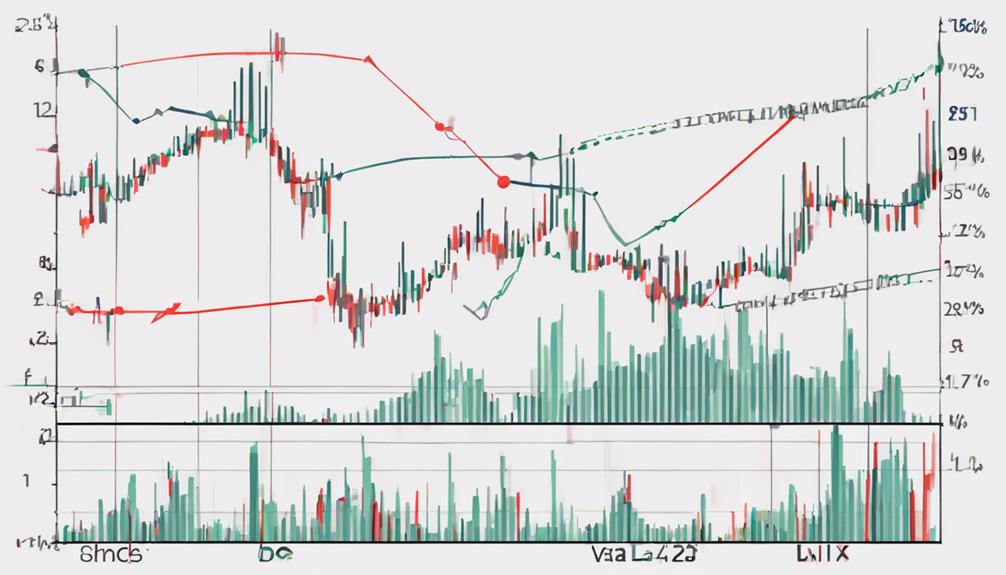
Analyzing Momentum Indicator Signals involves scrutinizing the relationship between current and past closing prices to determine the direction and strength of price momentum in the market. Traders rely on the momentum indicator to gauge the intensity of upward or downward price movements.
Positive values indicate upward momentum, while negative values signify downward momentum. When the momentum indicator readings rise above the median line, it suggests potential upward price trends, prompting traders to ponder long positions. Conversely, falling momentum indicator readings below the median line indicate potential downward price trends, prompting traders to evaluate short positions.
Practical Applications of Momentum Trading
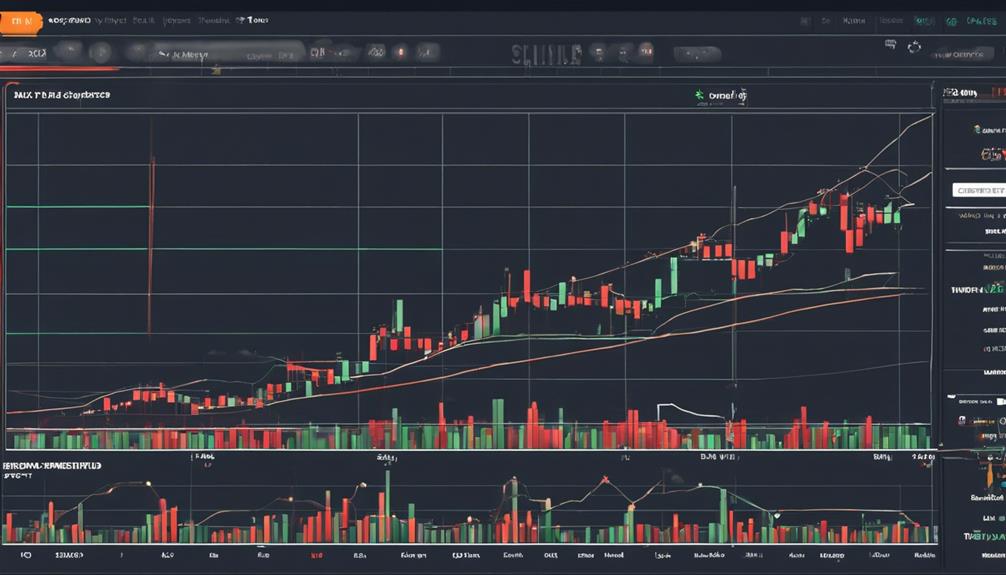
Building on the insights gained from analyzing momentum indicator signals, practical applications of momentum trading involve leveraging these indicators to make strategic trading decisions based on market momentum shifts. To effectively apply a momentum trading strategy, traders can consider the following:
- Utilize RSI and MACD: Incorporate popular momentum indicators like the Relative Strength Index (RSI) and Moving Average Convergence Divergence (MACD) to assess price movements and identify potential entry and exit points.
- Confirm Trends: Use momentum indicators to confirm existing trends in the market, helping traders stay aligned with the prevailing direction of price movements.
- Identify Reversals: Momentum indicators can also signal potential trend reversals, providing traders with insights into possible shifts in market sentiment.
- Interpret Signals: Understanding how to interpret the signals generated by momentum indicators is vital for making informed trading decisions, enabling traders to act decisively based on the momentum of the market.
Frequently Asked Questions
How to Use Momentum Indicator to Trade?
To use the momentum indicator for trading effectively, traders must focus on identifying entry signals and developing robust exit strategies.
It is essential to incorporate risk management practices, consider prevailing market conditions, analyze price action, and accurately identify trends.
Backtesting results can provide valuable insights, while trade psychology and proper position sizing are fundamental for successful trading strategies.
Integrating these elements helps traders optimize their use of the momentum indicator for profitable trading outcomes.
How to Learn Momentum Trading?
To learn momentum trading, aspiring traders must engage in consistent practice to hone their strategies, identify trends, monitor signals, and analyze data effectively. Setting clear goals, managing risks prudently, studying patterns rigorously, executing trades with precision, and reviewing performance regularly are crucial components of mastering this trading approach.
Developing a disciplined routine that incorporates these elements will enhance one's understanding and proficiency in momentum trading.
What Is the Most Effective Momentum Indicator?
When evaluating the effectiveness of momentum indicators, the Relative Strength Index (RSI) often stands out due to its ability to identify overbought and oversold conditions, aiding in timing entry and exit points.
Moving averages provide trend analysis, while oscillator signals like the Stochastic Oscillator offer insights into market psychology.
Volume confirmation validates price action, enhancing the reliability of signals.
Combining these indicators can offer a holistic view for informed trading decisions, supported by effective risk management strategies.
What Is the Best Time Frame for Momentum Trading?
The optimal time frame for momentum trading is pivotal in aligning trading strategies with market dynamics. Selecting an appropriate time frame involves considering trading hours, market conditions, and volatility levels to optimize trend analysis.
Additionally, it impacts risk management, entry points, exit strategies, and position sizing. Whether focusing on short-term intraday trades or longer-term trends, choosing the right time frame is paramount for successful momentum trading.
Conclusion
To sum up, mastering trading with momentum indicators requires a deep understanding of key concepts, market trends, volume, and volatility.
By evaluating momentum trading strategies and analyzing indicator signals, traders can enhance their skills and make informed decisions.
The practical applications of momentum trading offer opportunities for success in the dynamic world of financial markets.
As traders continue to refine their techniques and adapt to changing market conditions, the potential for profitable outcomes remains ever-present.
